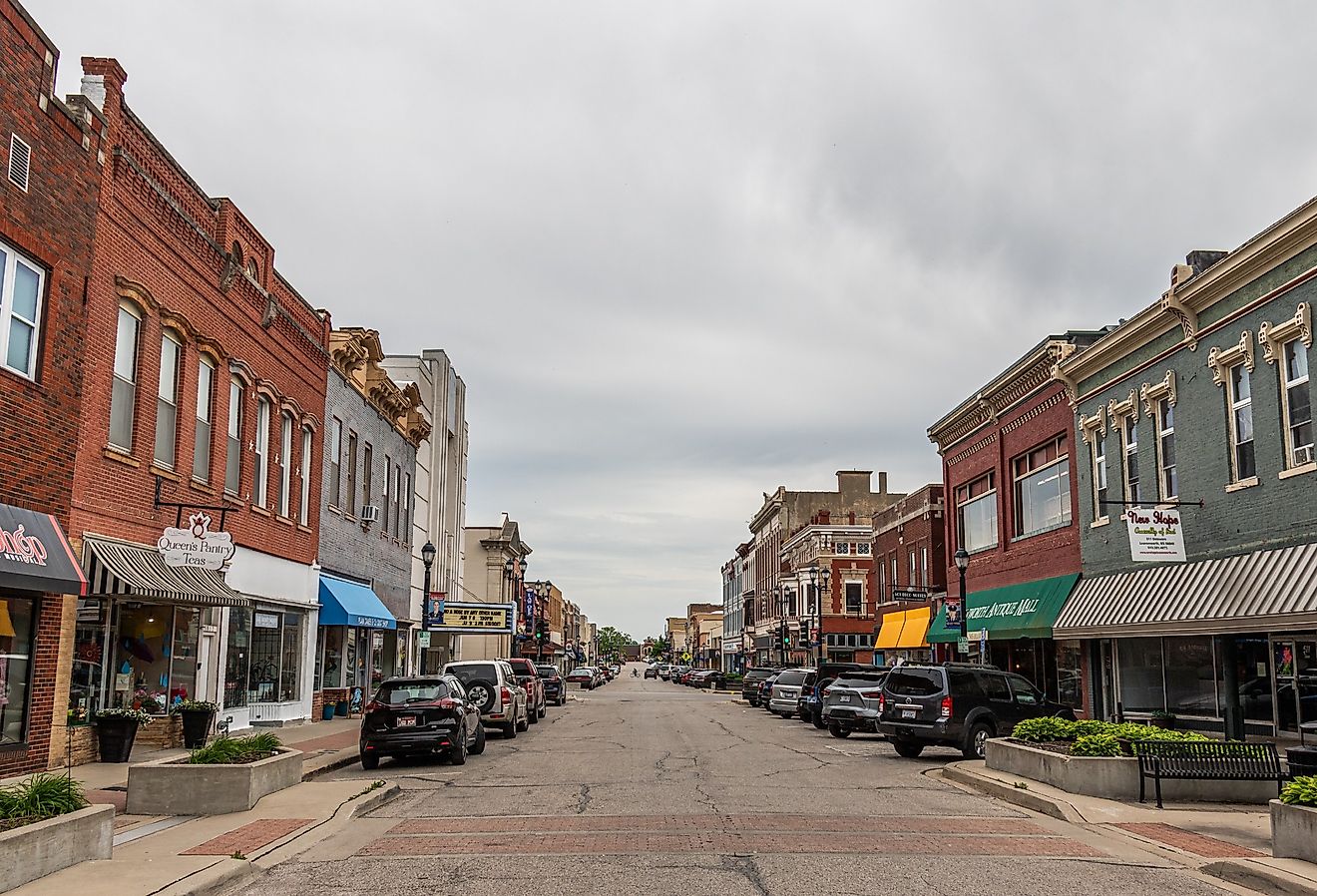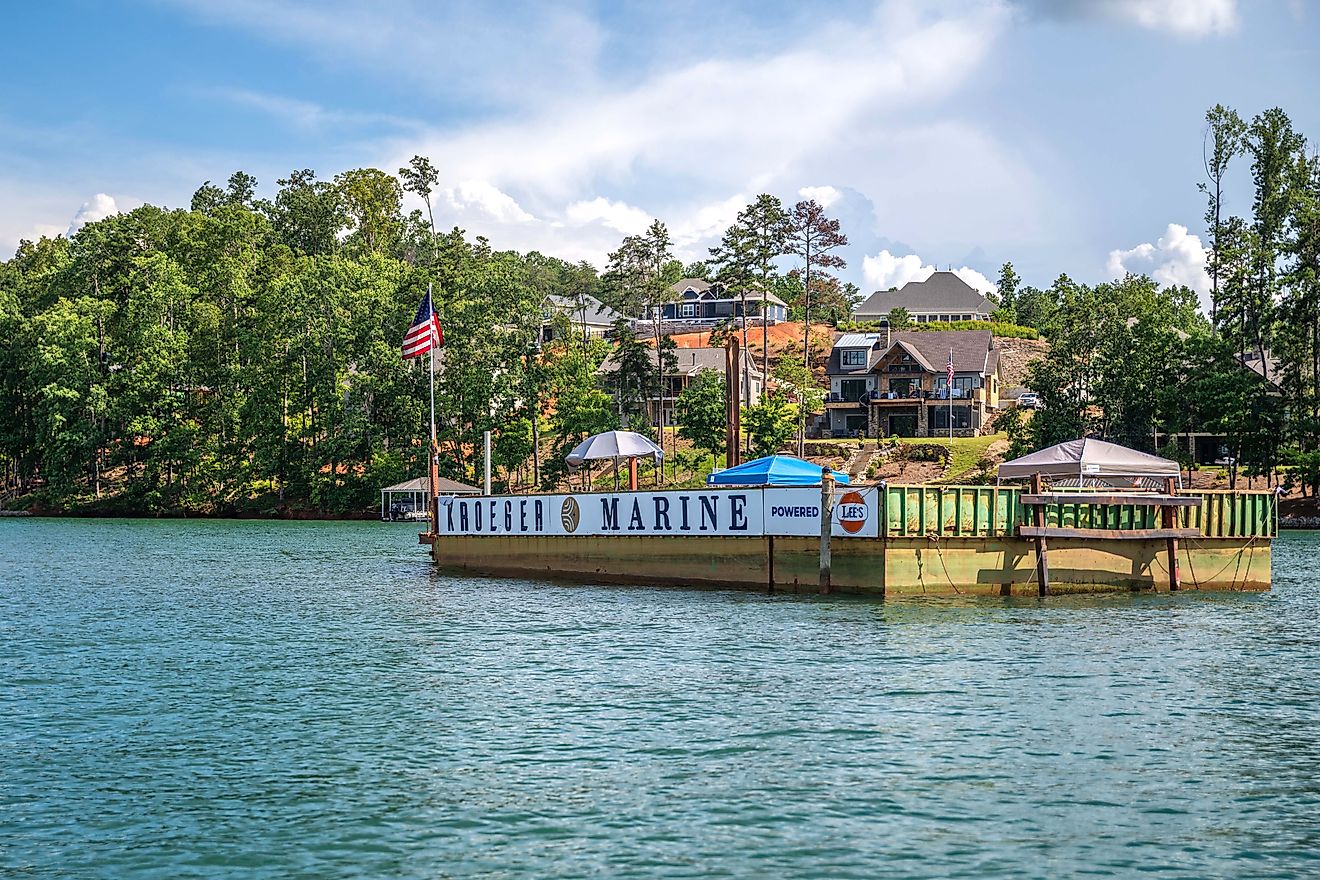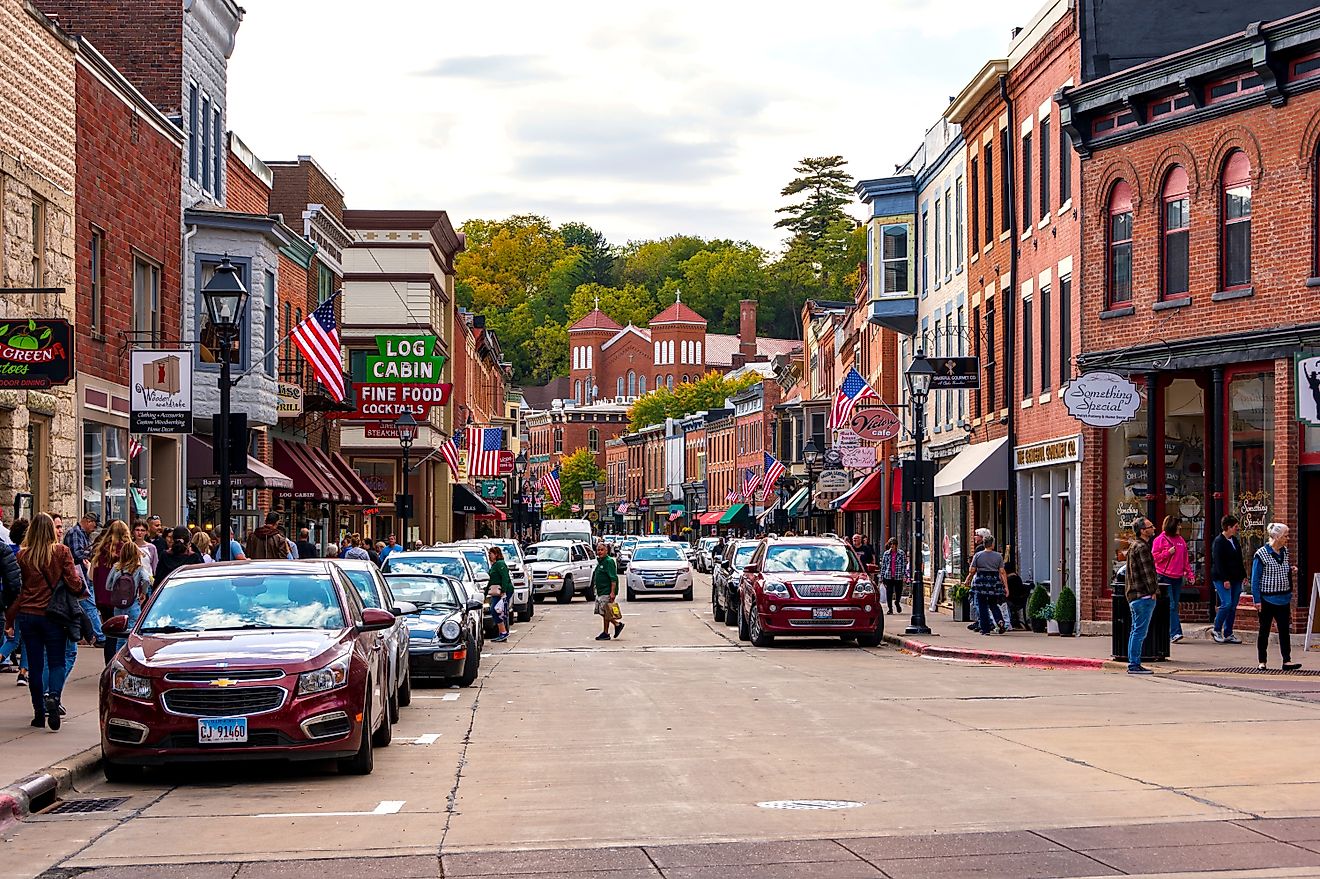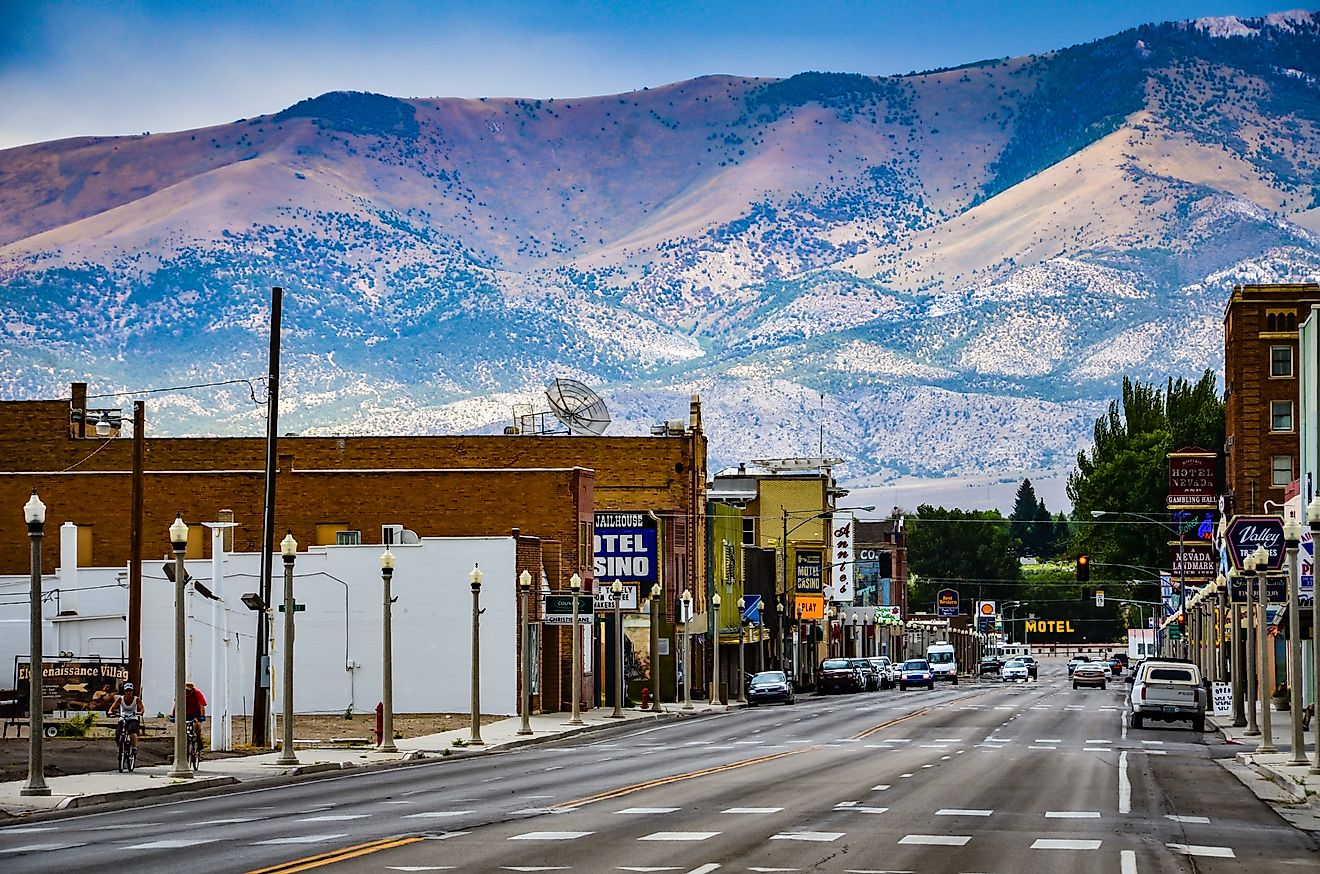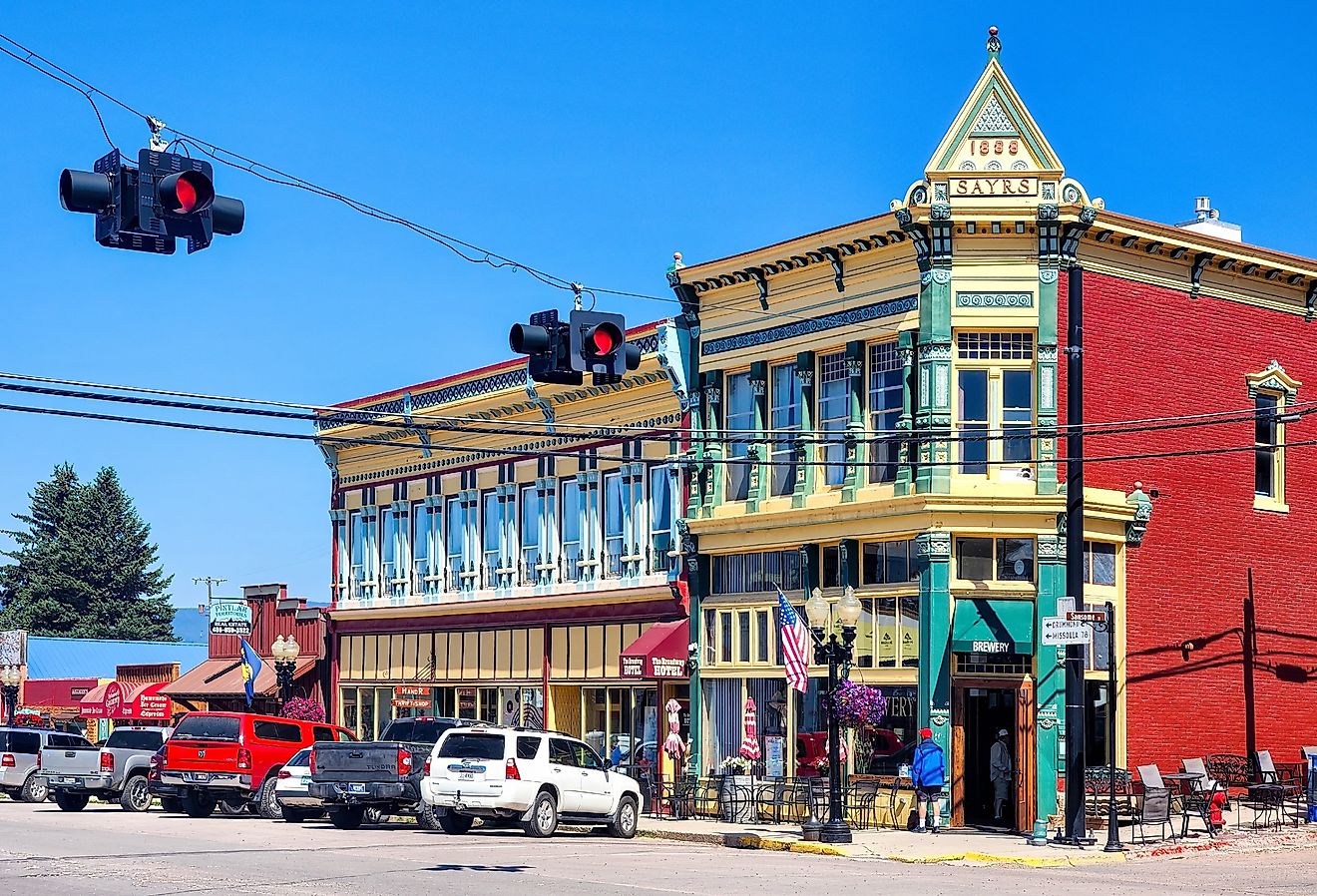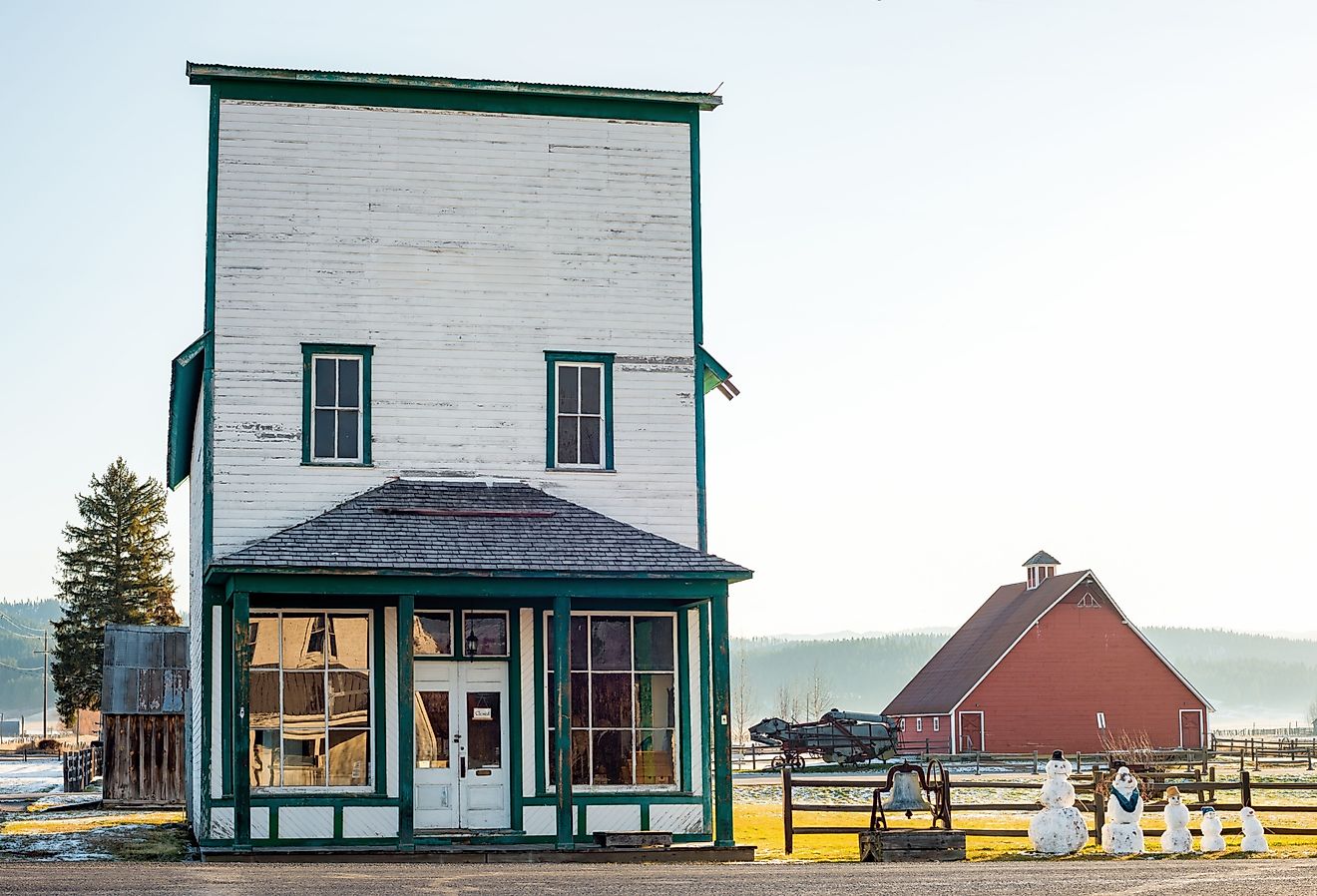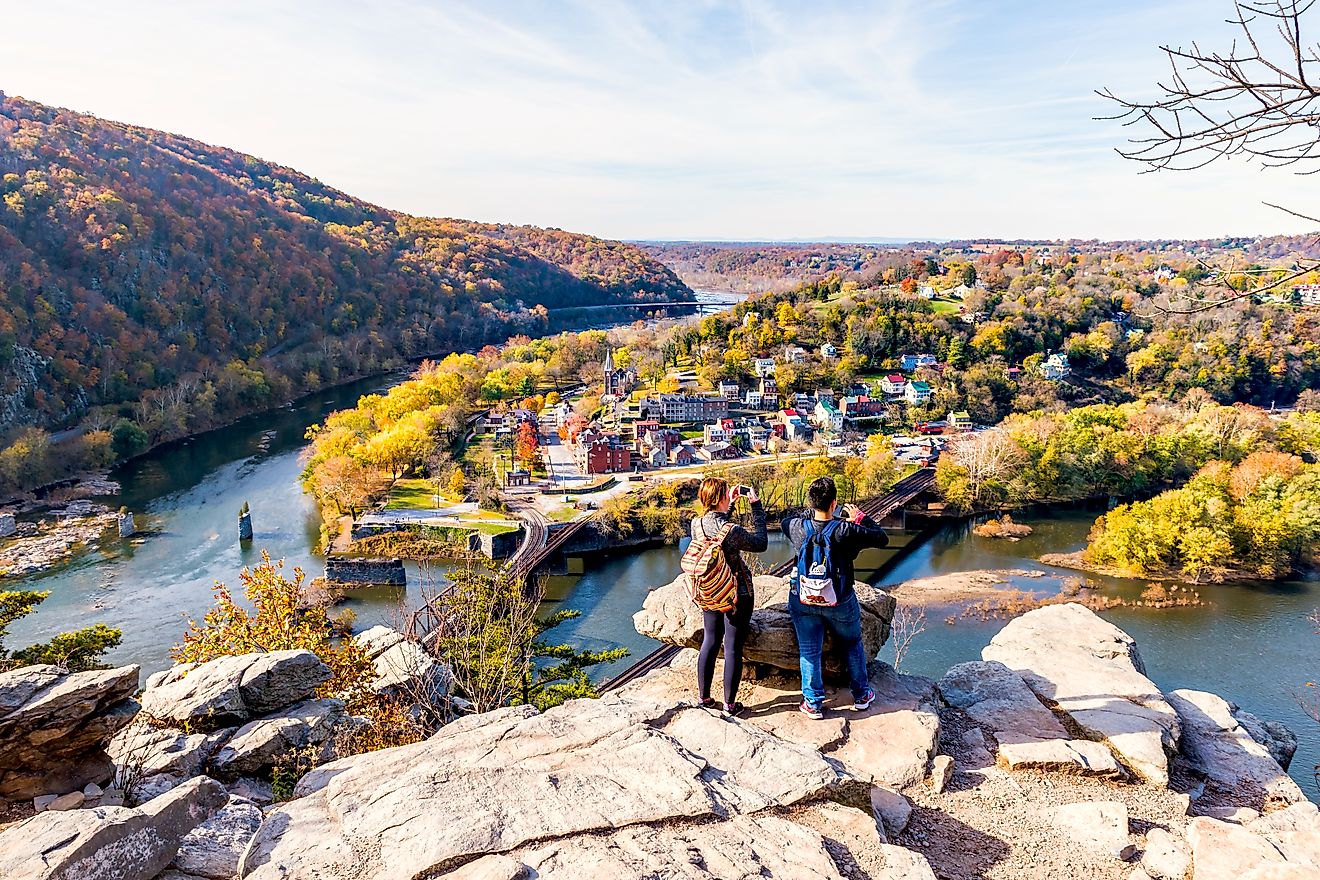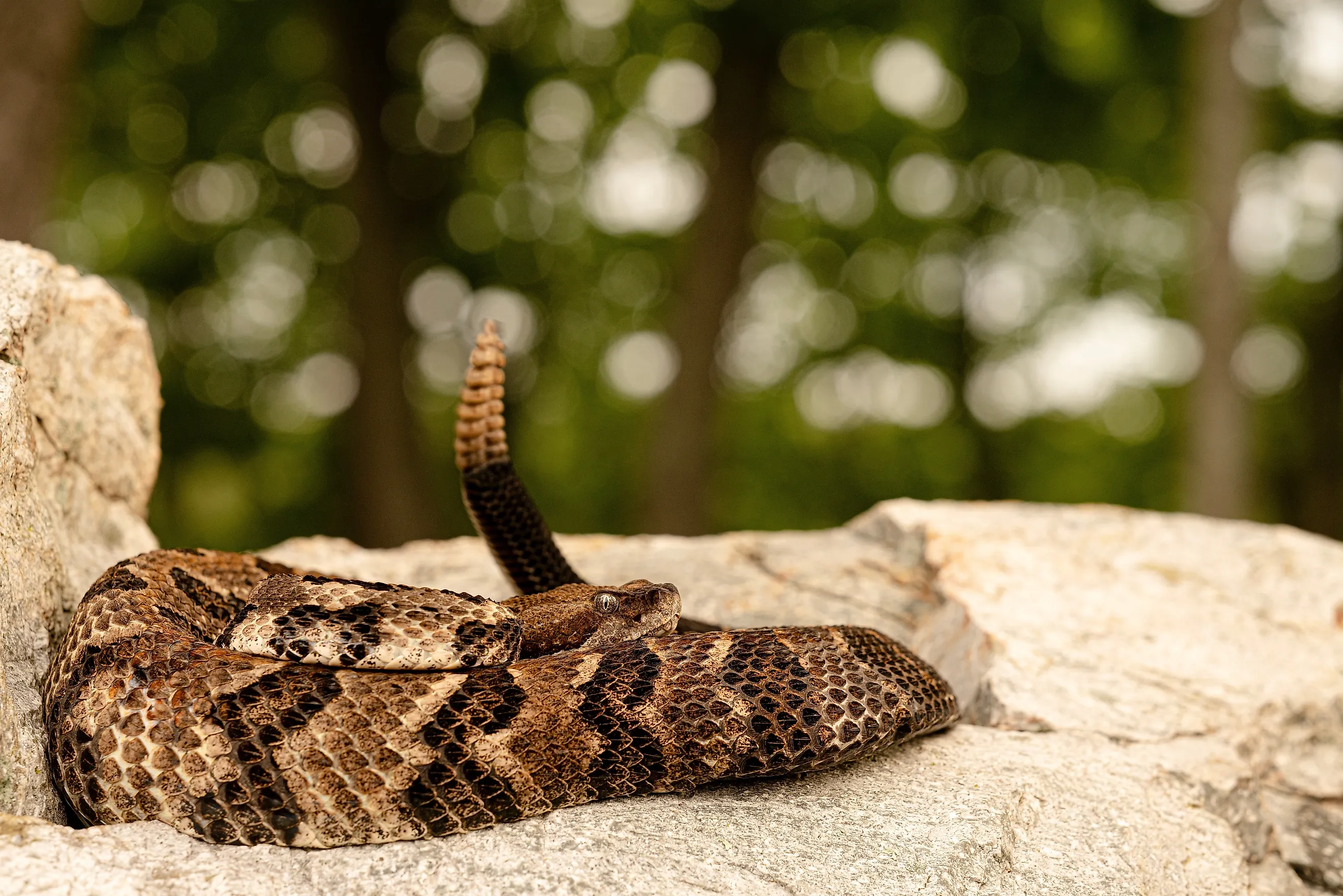
7 Most Rattlesnake Infested Areas In South Carolina
Under the leaves, off the trail, something is always waiting. South Carolina’s thick woods, flooded prairies, and secluded lakes hide more than just beauty—they offer cover for some of the Southeast’s deadliest snakes. With coastal marshes, pine barrens, and mountain rivers all coming together to form this landscape, it is a prime habitat for Eastern Diamondbacks, Timber Rattlesnakes, and Pygmy Rattlesnakes. They’ve slithered across Carolina soil for centuries, thriving in heat and cover. From Francis Marion’s swamps to Lake Moultrie’s still water and Ellicott Rock’s backwoods trails, snakes are part of it. If you’re going into these wild areas—walk watchfully, listen closely, and know what is waiting off the trail.
Francis Marion National Forest
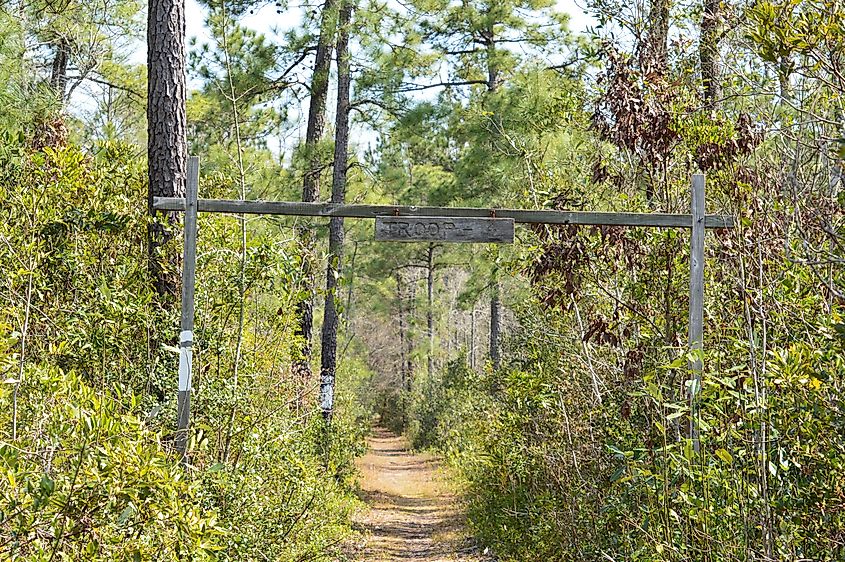
Spanning more than 250,000 acres of pine flatwoods, swamps, and palmetto thickets, Francis Marion National Forest provides a perfect habitat for the Eastern Diamondback and Timber Rattlesnake. Both snakes prefer the dry, sandy soils and dense forest undergrowth and are often missed by hunters and hikers. Eastern Diamondbacks are particularly large, reaching lengths of up to six feet, and use camouflage to ambush prey. Timber Rattlesnakes are especially common in the shaded hardwood sections of the forest, where they shelter beneath leaf litter, fallen logs, and brush piles during the day.
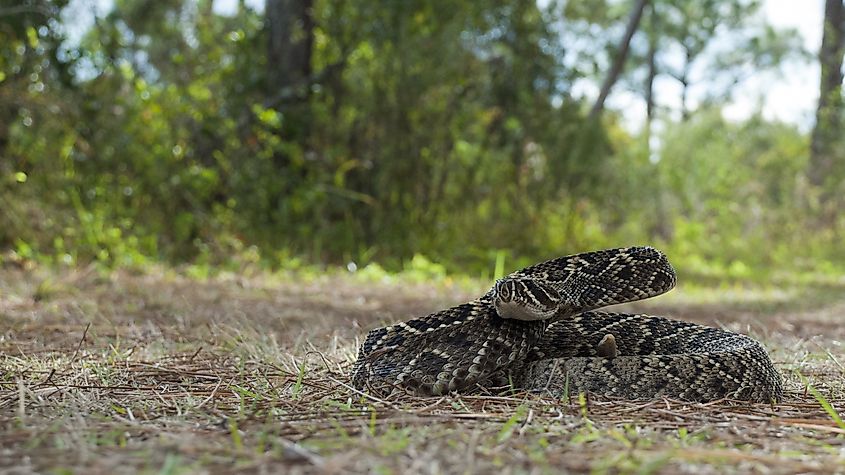
Biologist Mark Danaher, who tracks them locally with radio transmitters, calls them “our largest venomous snake that we have in the United States,” according to an interview with Live5 News. He’s lobbying for South Carolina to list the species as endangered due to habitat loss and population decline. The more elusive Timber Rattlesnake can be found in darker wooded areas and is just as commonly encountered around the region.
Lake Moultrie
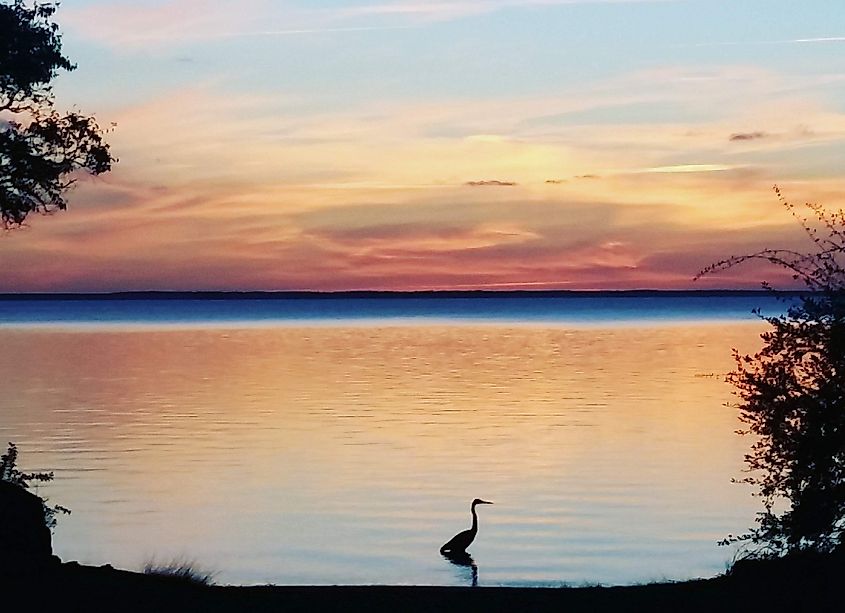
Just north of Charleston, Lake Moultrie covers 60,400 acres of cypress-lined shores, blackwater ponds, and tangled vegetation—ideal habitat for Timber Rattlesnakes, Copperheads, and non-venomous water snakes. It’s a hotspot for catfish anglers and kayakers, especially near the Pinopolis Dam and Diversion Canal, where shallow banks and warm rocks attract snakes.
One memorable case involved a female Eastern Rat Snake captured with wood duck eggs bulging in her stomach—a vivid reminder of the lake’s active food chain. At the top of that chain, Timber Rattlesnakes take advantage of the same thriving ecosystem, often hunting near dense vegetation or dry ridges just above the shoreline.
Lake Jocassee

Tucked inside the Jocassee Gorges and accessible only through Devil’s Fork State Park, Lake Jocassee is one of South Carolina’s most pristine—and surprisingly snake-rich—natural areas. Surrounded by waterfalls, cliffs, and dense forest, this 7,500-acre mountain lake is home to Timber Rattlesnakes, which prefer the rocky outcrops and forested slopes above the waterline, along with Northern Water Snakes, Eastern Garter Snakes, and occasional Cottonmouths near the marshy fringes.
Snakes are often seen basking on sun-warmed rocks or low tree limbs near the water, especially in quiet coves and shallow inlets. Despite the lake’s crystal-clear and cold water, its overgrown pockets and secluded shoreline provide perfect reptile cover. Whether by kayak or hiking trail, this place delivers nature in full—complete with a slithery twist.
Ellicott Rock Wilderness
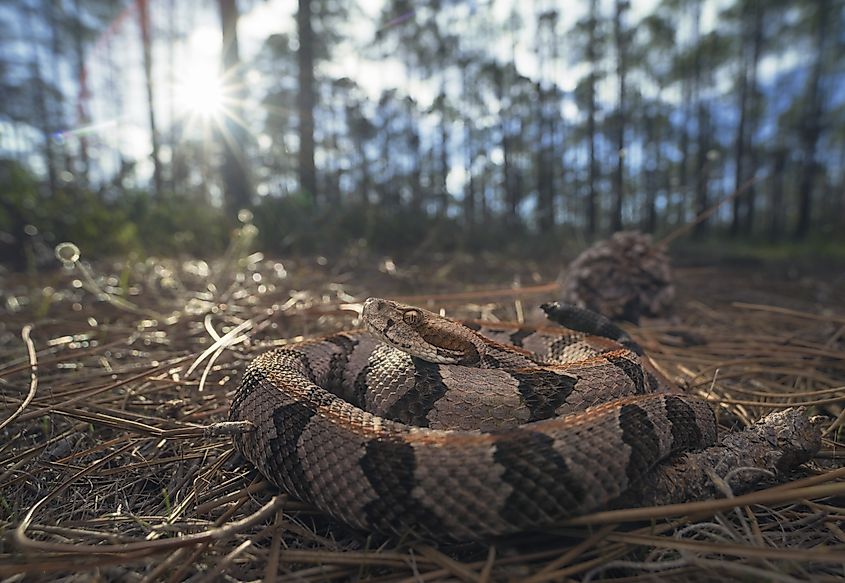
At the junction where Georgia and North Carolina meet, South Carolina lies the Ellicott Rock Wilderness—3,900 acres of rugged terrain, steep ridges, and rocky riverbanks that Timber Rattlesnakes call home. Deep leaf litter and shaded slopes provide excellent cover, while the Chattooga River and its tributaries attract abundant prey. It is not a busy hiking area, which is exactly why rattlesnakes thrive there. Trails like Fork Mountain and the Chattooga River Trail wind through territory where human presence is rare. Timber Rattlesnakes are seldom seen—but rest assured, they’re nearby.
Lake Marion
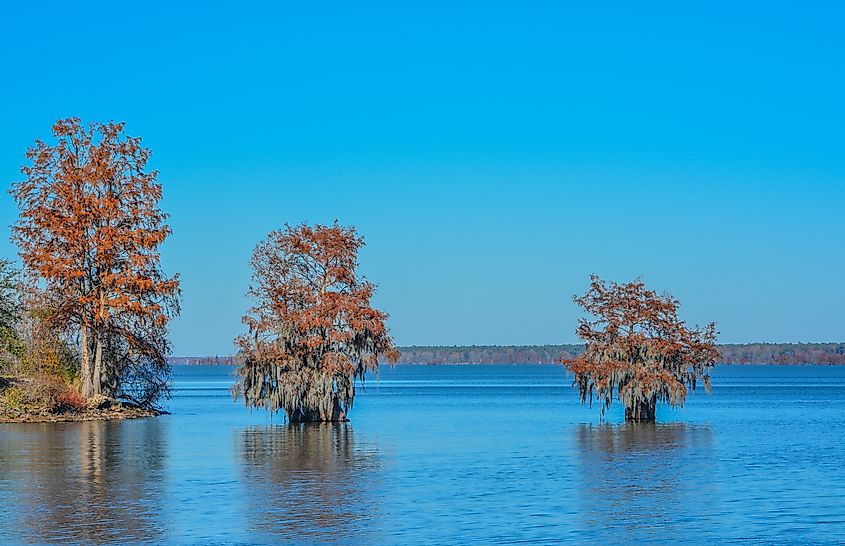
Stretching across 110,600 acres and five counties, Lake Marion is South Carolina’s largest lake—and one of its most snake-infested. Its broad floodplains drowned woods, and moss-draped cypress swamps create ideal conditions for Cottonmouths, Rattlesnakes, Copperheads, and non-venomous species like banded and brown water snakes. Eastern Diamondback Rattlesnakes roam the area, particularly around dry pine ridges and sandy patches along the lake’s edges.
Known as the heart of Santee Cooper Country, Lake Marion draws fishermen and nature lovers alike. But those drifting through its quiet backwaters may encounter more than fish. Areas near Santee State Park and remote creeks see the most activity during the warmer months when snakes are on the move.
Sand Hills State Forest
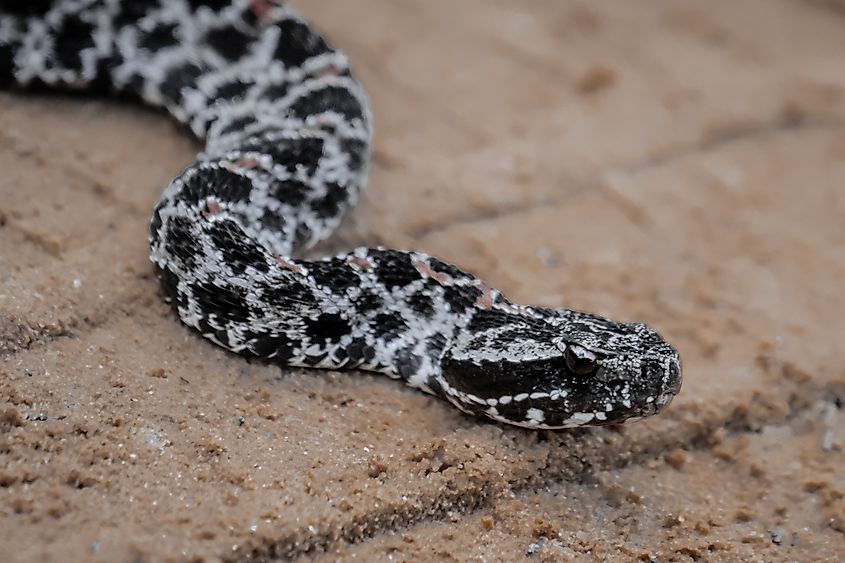
Dry, sandy, and thick with pine barrens, Sand Hills State Forest in Chesterfield County is the perfect territory for the elusive and venomous Pygmy Rattlesnake. These snakes rarely exceed two feet, but their size and coloring make them nearly invisible among the pine needles and leaf litter. They favor firebreaks, old logging roads, and sunlit clearings where they lie in wait for lizards and small rodents. Their faint rattle is easy to miss—making close encounters all the more likely. With terrain built for camouflage, few places in the state hide snakes better than Sand Hills.
Savannah River
Flowing along the South Carolina-Georgia border, the Savannah River snakes through wetlands, hardwood forests, and lowland swamps—prime habitat for Copperheads, Cottonmouths, and Timber Rattlesnakes, which often settle near bluffs or tree roots close to water. These venomous species thrive in the river’s leaf-littered trails and thick underbrush, especially near quiet coves and fishing spots.
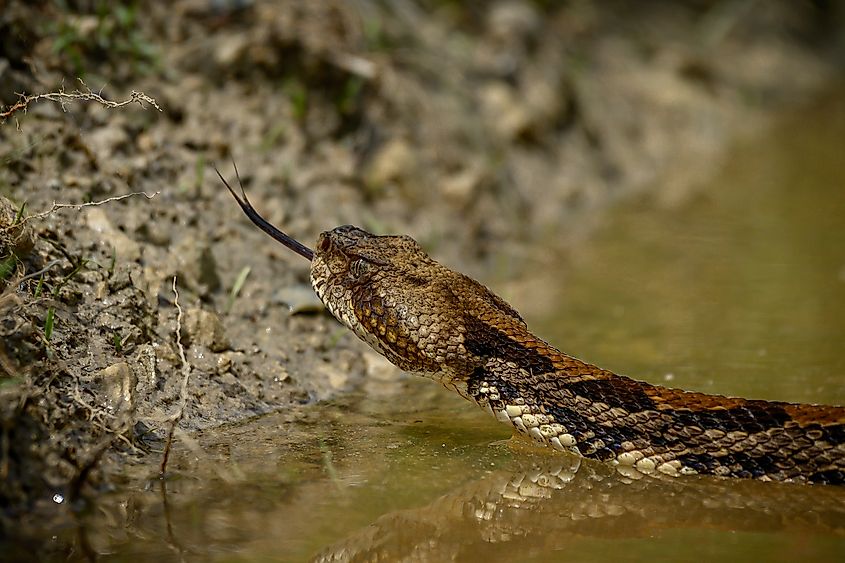
The river also supports a wide range of harmless snakes, like rat snakes, rough green snakes, and coachwhips—alongside alligators, frogs, and more than two dozen lizard and salamander species. Its wildest stretches support rare species like the threatened Flatwoods Salamander, making the Savannah River both a biological treasure and a slithery surprise.
The Wild Doesn’t Warn
You can hike the trail, canoe the river, or camp under starlight, but in South Carolina’s wildest edges, you’re never truly alone. Rattlesnakes ruled these woods and wetlands long before we carved out paths or built boat ramps. They still do—silent, still, and unseen woven into the landscape like roots beneath your feet. Whether it’s the rustling brush near Congaree, the quiet shimmer of Lake Marion, or the rocky hush of Ellicott Rock, these wild places belong to them, too. So go—explore, fish, roam—but tread lightly. Read the signs. And remember: the wild doesn’t always give warning.
